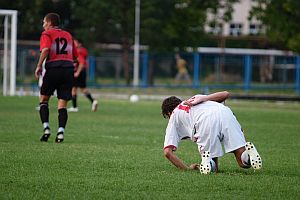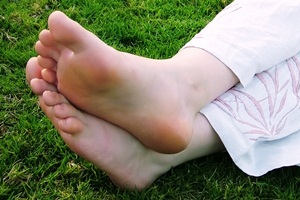Chiropractic and Professional Soccer
 Professional soccer (or football, as it is called in parts of the world outside the U.S.) is a sport that is rough on the musculoskeletal system. It’s not uncommon to see a player suddenly drop to the ground holding his leg in apparent pain. Sometimes this is just a way of slowing down the game or trying to draw a penalty. However, it can also be a sign that the player has sustained a real injury.
Professional soccer (or football, as it is called in parts of the world outside the U.S.) is a sport that is rough on the musculoskeletal system. It’s not uncommon to see a player suddenly drop to the ground holding his leg in apparent pain. Sometimes this is just a way of slowing down the game or trying to draw a penalty. However, it can also be a sign that the player has sustained a real injury.
Soccer involves movements that are particularly hard on the lower body. Players must often change direction very suddenly when running down the field. This means that they twist the upper body quickly in one direction while their feet are still planted in another. When this occurs, it places a great deal of stress on the tendons and ligaments in the knees, potentially resulting in injuries. Leg injuries can also occur when players are kicked repeatedly or are shoved or tackled when in vulnerable or awkward positions.
The legs aren’t the only part of a soccer player’s body that takes a beating. Their heads are often used to redirect a ball flying through the air at 60 or 70 mph, putting a strain on the entire spinal column. With all the twisting that soccer players do, it is easy for their spines to become misaligned, putting pressure on nerves and causing pain not only in the back, but in the limbs as well.
With all this abuse, many professional soccer players have found that chiropractic care helps keep them on the field and performing at their best. Dr. Mike Foudy, who was the team chiropractor for the Women’s World Cup Championship team said, “all but one member of the team received regular chiropractic care during their training and on the days of their matches. Chiropractic adjustments balanced their spine, removed nerve pressure and optimized the function of their bodies. All the players felt like they healed quicker from injuries and that the care gave them a competitive edge.”
A former World Cup champion from Brazil, Carlos Alberto Torres, credits chiropractic with resolving chronic disabling back pain that had kept him relying on crutches to walk. Traditional medical treatments had not helped, and finally someone referred him to a chiropractor. The chiropractic care he received enabled him to have a quick and full recovery so he could walk again without crutches and free of pain.
With the 2014 FIFA World Cup coming up in Brazil, professional soccer players will no doubt be lining up for chiropractic services. As Dr. Erik Plasker, the team chiropractor for one of the top US youth soccer teams noted, “while the other teams are scrambling to change their lineups due to injuries, our team bounces back fast and brings an energetic advantage to championship games. The players and coach agree that chiropractic care helps them compete at the highest level and avoid injuries.”








